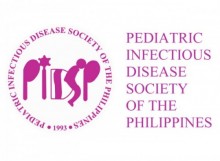Journal 2019 Vol.20 No.2
Childhood Meningitis in an Urban Tertiary Medical Center: A 20-year Review
Angelina B. Calderon, M.D. & Robert Dennis Garcia, M.D.
Abstract
Background: Meningitis is a neurological emergency causing significant morbidity and mortality. This research determined the etiologies, clinical presentation, and ancillary work-up findings of different types of meningitis.
Objective: To characterize the documented pediatric meningitis cases in a tertiary hospital admitted between January 1, 1997 to August 31, 2017.
Methods: This was a retrospective study which entailed review of charts of all pediatric cases 0 to 18 years old with a discharge diagnosis of meningitis (bacterial, viral, tuberculous or fungal) from January 1, 1997 to August 31, 2017 at an urban tertiary medical center.
Results: This study included 127 subjects, where 74 (58.3%) had bacterial, 34 (26.8%) had viral, 17 (13.4%) had tuberculous, and 2 (1.6%) had fungal meningitis. Streptococcus pneumoniae (12.2%), Haemophilus influenzae type b (6.8%) and Salmonella enteritidis (6.8%) were the top bacteria identified. Neonatal infections were caused by gram-negative bacilli (66.7%) and gram-positive cocci (33.3%). Bacterial, tuberculous, and viral meningitis were seen in the 1-11 months, 2-4 years and 5-10-year age groups respectively. Prolonged fever (mean 27.2, median 14 days) and cranial nerve palsies (23.5%) were noted in tuberculous meningitis (TBM). The highest CSF mean WBC (2043±9056 WBC/µL) and mean protein (300±365.6mg/dL) were seen in bacterial and tuberculous meningitis respectively. The combination of hydrocephalus, basal enhancement and infarct was unique to patients with tuberculous meningitis. Recurrent seizures were the most common complication of bacterial (36.5%), viral (20.6%) and tuberculous (100%) meningitis. Ceftriaxone (24.3%), acyclovir (38.2%), and isoniazid/rifampicin/pyrazinamide/ethambutol (76.5%) were the most common antimicrobials for bacterial, viral, and tuberculous meningitis. Fever duration before admission was significantly longer in TBM (14 days) than in viral (4 days) and bacterial meningitis (2 days). Length of hospital stay for viral meningitis (6.5 days) was significantly shorter than for TB (14 days) and bacterial meningitis (12 days). Mortality rates were 12% and 11% for bacterial and viral meningitis respectively. No mortality was seen in patients with TB and fungal meningitis.
Conclusions: In this 20-year review of childhood meningitis, bacterial meningitis was the most common type of pediatric meningitis which presented with marked CSF pleoctyosis. The longest fever duration and the highest proportion of cranial nerve involvement were seen in TBM, which also had the unique combined findings of leptomeningeal enhancement, hydrocephalus and infarct on imaging. Ceftriaxone was the most commonly used antibiotic for bacterial meningitis, except in neonates where a combination of cefuroxime-amikacin was initially given until microbiological confirmation became available. Recurrent seizures were the most common complication of bacterial, viral and TB meningitis. The shortest hospital stay with the highest full recovery rate was seen in viral meningitis.
Keywords: meningitis, clinical manifestations, ancillary findings, treatment, outcomes
https://doi.org/10.56964/pidspj20192002005
| View Full Article in PDF format |
Journal 2019 Vol.20 No.2 Original Articles 3pidsp@uplink.com.ph2022-12-11T03:32:18+00:00
